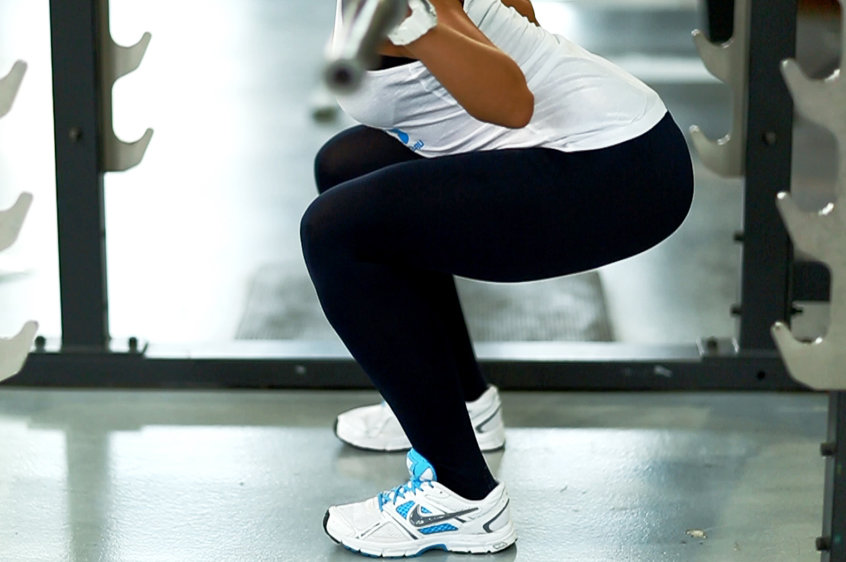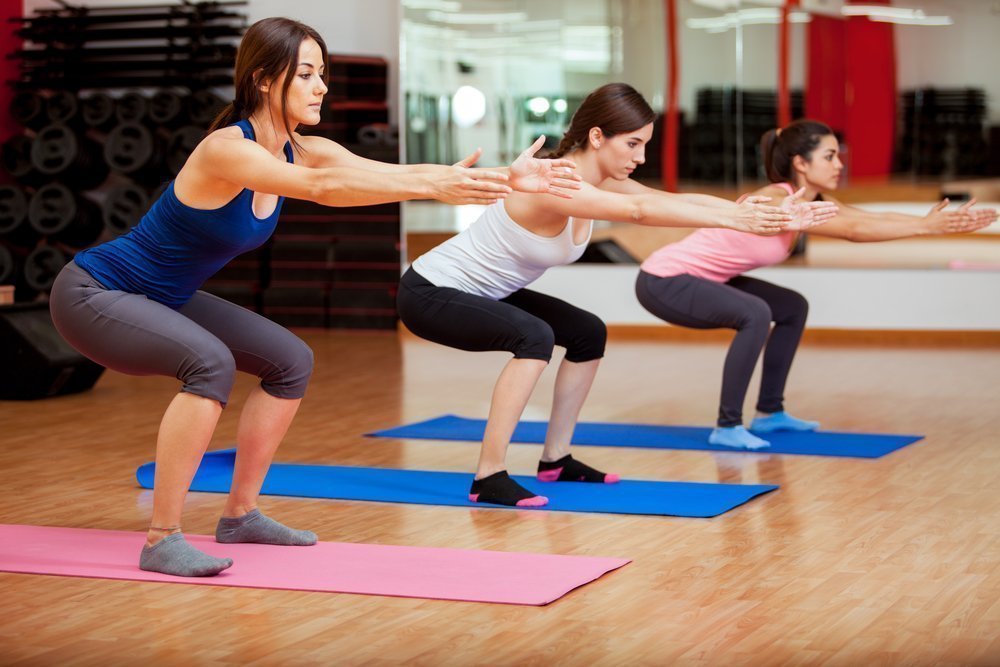There is neither time nor opportunity to play sports for 1.5-2 hours a day? In that case, start squatting. It has been proven that this simple exercise, familiar to everyone from physical education classes, has tremendous benefits for the human body. What changes occur in it in the case of daily 100 correct squats for a month? Let’s talk about them further in detail.
Weight loss

A person who weighs, for example, 70-80 kg, squats 100 times, burns about 40-50 calories. It is worth noting that the greater the bodyweight of a person, the more calories he will be able to burn.
In order to enhance the effect of squats, you can use weights or dumbbells. In this case, when performing 100 squats, the number of calories lost can be increased to 200-400, depending on the intensity of the load.
Practice shows that a properly performed exercise in a couple of weeks allows you to lose at least 1-2 kg. Remember that in the process of performing a standard complex, the body is saturated with oxygen, and metabolic processes are accelerated.
The results of the observations clearly demonstrate that the best way to reduce body weight is to squat in the morning. Accordingly, if your goal is muscle building, then the optimal time to perform the exercise is in the evening.
Increasing the ability to work

A person who regularly squats feels a real surge of vitality, as a result of which the level of his ability to work increases. All this is due to the beneficial effects of exercise on brain cells and blood vessels.
Within a week from the start of the exercise, a person becomes more energetic, stress-resistant, as well as focused, and attentive.
Strengthening the cardiovascular system

Performing 100 squats a day, a person strengthens his cardiovascular system. This effect is due to the fact that in the process of performing the exercise, venous circulation begins to function more actively, as a result of which blood immediately rushes to the heart.
Against the background of ongoing processes, the work of the heart muscle is noticeably facilitated, and its training is also carried out.
Few people realize that regular squats affect the strengthening of the respiratory and nervous systems of the body, as well as the vestibular apparatus.
Giving the shape clearer lines
After 6-8 weeks of regular and correct squats, the body begins to take on clearer shapes. So, the lines of the hips and waist become more accurate, and the buttocks acquire a pleasant elasticity. The changes also affect the abdominal press – it becomes pronounced and toned.
As for men, as a result of squats, their legs become more prominent. Speaking about the female figure, it should be noted that the waist is noticeably reduced in volume.
Visible positive changes in the gluteal muscles can be achieved when the number of squats is gradually increased to 200 per day. Ideally, if they are performed with weights.
Those who squat are not afraid of injury

A person who does 100 squats daily strengthens joints and ligaments. Being trained, they are not subject to sprains and bruises, and if trouble does occur, then its consequences are insignificant.
By the way, it is shallow squats that help get rid of the annoying crunch in the knees and joints. In fact, you can practice deep squats, but you should definitely take into account the fact that they create a large load on the kneecaps, and if your kneecaps are weak, then it’s better not to risk it, at least initially doing shallow, but static squats.
Endurance Improvement

After the first squats, it is impossible to feel a positive effect. All that a person feels in the first two days is muscle pain and fatigue. At this moment, the main thing is not to give up and continue to perform the exercise correctly and, most importantly, every day.
Practice shows that after a week 100 squats are given quite easily, and after 10 days the first effect will become noticeable. Within three weeks, the legs become quite dense, and the person ceases to experience shortness of breath during physical exertion.
How to squat

Before you begin to perform a set of exercises, you should definitely warm up by rotating the feet, as well as flexing and extending the kneecaps. This allows you to make the knee joints and muscles more plastic, and will also have a positive effect on the effectiveness of each workout.
Special attention should be paid to the choice of squat mode. It is better to start with 100 times a day, dividing them into 5 sets of 20. As soon as the muscles get used to the load, it is recommended to divide the entire complex into 2 sets of 50 times. Ultimately, you should end up doing 100 squats in 5-8 minutes. At first, it is worth doing the exercise in slow motion, since forcing events often leads to sprains and discomfort. Increasing the load and acceleration is appropriate only when the muscles have acquired some tone.
The effectiveness of the exercise in question directly depends on how correctly it is performed. To do this, take a confident position, placing your feet shoulder-width apart, parallel to each other. With your hands on your belt or straight in front of you, you should do a squat with a flat back. In the process of flexion-extension of the legs, you should not tear your heels off the floor, and also make sure that your bent legs are parallel to the floor. Look straight ahead during the exercise. If you have a desire to properly pump the abdominal muscles, then this part of the body needs to be strained.
To practice the correct technique, you can use a chair, placing it behind you.
To avoid sprains, try to perform the exercise smoothly, without making sudden movements. If you have a desire to add weights, then it is recommended to do this no earlier than 2-3 weeks after the start. This is due to the fact that the weighting agents contribute to the creation of an additional load – at first, this negatively affects the condition of the muscles.
